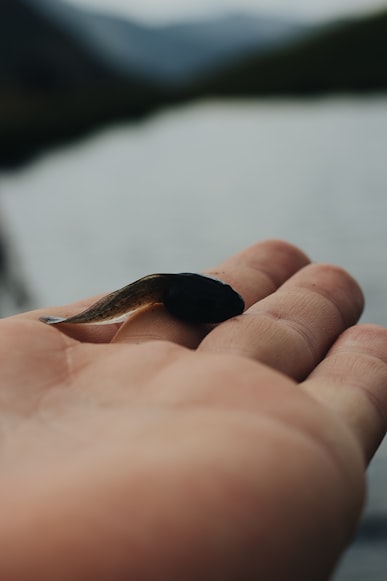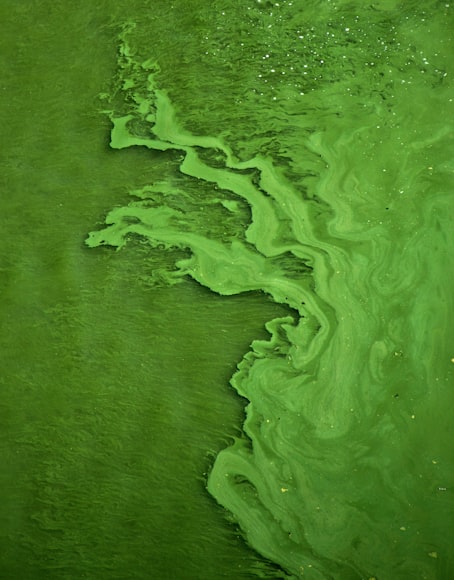As an Amazon Associate I earn from qualifying purchases.
What Do Baby Tadpoles Eat?

Tadpoles are one of the most difficult life stages for frogs to survive through. If you’ve ever kept frogs, you’ll know that tadpoles can be quite tough. During this time, tadpoles will usually transform into frogs after a few weeks at most, depending on the species, and they’ll want all of the nutrients they can get to become robust, happy frogs.
While it’s true that tadpoles will grow into frogs, they are not yet doing so, and their nutritional requirements are vastly different from those of frogs. So, while they’re in this crucial maturation phase, they have particular requirements that might be difficult to meet when raising them as pets.
In this post, we’ll look at what tadpoles eat in nature and how you can replicate that as closely as possible when breeding them as pets.
What Do Baby Tadpoles Eat?
They can be found in ponds and lakes with algae and vegetation, which protect them from predators. Different species like slightly different surroundings. The coldest types are found in water temperatures ranging from 40 to 75 degrees Fahrenheit.
Throughout the majority of their existence, tadpoles are omnivores. They eat vegetation, dead insects, water striders, and small fish in addition to other things. Their diet changes again as they become frogs/toads and become exclusively carnivorous.
Because the number of foods available has not been determined, we still don’t know exactly what tadpoles eat in the wild. They do not begin life as omnivores, however. When they hatch, they consume the yolk sack of their egg, which is high in protein to aid with rapid growth. They must now find their own food.
Newly born tadpoles are tiny. It’s difficult to come across other animals that are small enough to eat, so they feed on algae. They have a long coiled intestine as youngsters that is developed for processing plants and extracting proteins and calcium.
When they reach a certain size, they can leap from plant leaves/stems up to the level of small insects. Once they reach adulthood, tadpoles will consume almost anything they can fit in their maws. This helps them find as much food as possible so that they may grow faster and have more energy.
What Do Baby Tadpoles Eat in The Wild?

Most tadpoles are herbivores at first, and their diet during the early phases is basic. They then transition to an omnivorous diet, and by the time they become frogs, they are almost exclusively carnivores.
Tadpoles will generally stay in or around the pond where they were born and eat algae from the surrounding area. Their diet gradually expands as they get bigger, and they’ll start to nibble on other plants and moss while also consuming insect or worm larvae.
Because there are so many different types of frogs, tadpoles could consume a wide variety of food depending on where they were developed, and thus specialists are still uncertain about everything that these tiny creatures feed on.
What’s known is that tadpoles begin eating the yolk sack of their egg. This has a lot of protein in it, and when it’s done, they’ll have to start feeding themselves. When they move on to algae after this, their intestine gets longer and better adapted for vegetation digestion.
Their stomach shortens as they get older tadpoles, and they will eat anything that can fit into their mouths, whether it’s plants, leaves, moss, or little insects.
What Do Baby Tadpoles Eat As Pets?

To ensure that tadpoles thrive and eat frequently, their aquarium should be as similar to their natural environment as feasible. Fortunately, they can live in a wide range of water conditions, but a pH level of 6-8 is optimal, as well as slightly hard water. Keep nitrates at bay in any tank (as with any tank).
Plants are essential for aquarium maintenance since they fulfill a number of important functions. They keep the water clean, acting as a backup food source and providing a secure place for tadpoles to hide.
When they have a safe place to hide, they become more comfortable in the tank and are less likely to refuse food. They will consume your tank’s plants, so be prepared for them to suffer some damage. Hardy, fast-growing plants (such as hornwort) that can tolerate hardness and neglect will endure longer.
The kind of food you offer them is determined by their age. Store-bought fish foods, particularly flake foods, are easy to break up and satisfy babies. Foods produced especially for tadpoles may be purchased from certain stores.
Getting food from stores may be useful, but there are several things you can feed them in your own home. You may discover various recipes for homemade fish foods or simply adding uncooked vegetables into the tank will be effective.
If you’re raising tadpoles, remember that the food’s size can increase as they mature. As a result, you may start feeding larvae and dead insects to the baby tadpole’s diet at this age. If these new items are not consumed within a couple of days, try again the following week.
Introduce these foods at 3 or 4 weeks of age for the greatest effect. They can vary in size, so use your judgment to adjust their diet when they’re older. Feeding times are always exciting when you change up their food, and it provides all of the nutrients they require.
Protein is essential for development, therefore it is especially crucial for tadpoles since they are growing throughout their entire lifetime, from hatching to becoming a completely grown frog or toad.

They’ll get the protein they require if you feed them animal flesh. Bloodworms and aphids are two convenient methods, but any tiny insect will suffice. Don’t put any meats in the tank that they wouldn’t encounter in the wild, such as cattle or chicken; it will be difficult for them to digest.
Algae, aphids, bloodworms, cooked eggs, crickets, frozen food pellets, fruits, fruit flies, leafy greens, and tiny fish are just a few of the foods that may be fed to your pet tadpole.
How Much Do Baby Tadpoles Eat?
Because tadpoles develop quickly, they mature fast as well. After only a few weeks, they’re already practically frogs! Because of their quick development, they have a voracious appetite and will require to be fed at least once a day to stay healthy. Overfeeding can be dangerous, as the uneaten food may sink to the bottom of their aquarium and begin to decompose, causing a filthy tank in no time. If you give them too much food after an hour or two, you are probably overfeeding them.
Unfortunately, the precise amounts are difficult to determine because they vary depending on the age and species of tadpole, as well as the food you’re feeding them. A week-old tadpole should get a small pinch of flakes each day, and you may compute other foods using this as a guide. Once again, the best approach is to check the quantities remaining after feeding and make any necessary changes afterward.
After your tadpoles have developed legs, you can start reducing the number of times you feed them for a while. Their tail will no longer be required, allowing them to obtain nutrients from it. When their tail is almost gone, you may resume normal feeding.
What Is The Difference Between Tadpoles and Frogs?

Other features such as the long tail and lack of limbs are among the most apparent distinctions between tadpoles and adult frogs, although other differences exist. The tadpole’s jaw and cranium are significantly different from those of an adult frog. Tadpoles have cartilage rather than bony skulls; they also have tiny teeth that enable them to chow down on pond weeds and other organic matter.
As a tadpole matures, its paddle-like tail shrinks away, giving rise to limbs. The rear legs develop first and their bodies alter and mature throughout the development process into a juvenile frog. The frog’s teeth and jaw grow more distinct, with a muscular tongue in place of teeth. The gills dissolve away, allowing the lung and intestines to shorten as the diet of adult frogs becomes more carnivorous.
What Are The Natural Predators of Baby Tadpoles?
Many creatures eat different amphibians, such as frogs and tadpoles, in addition to millions of other animals. According to scientists, most animals will consume frogs because many amphibians are defenseless against potential predators; furthermore, they are sluggish movers for all living things.
Many types of animals, including pigs and ducks, consume frogs and tadpoles. Because invertebrates are difficult to assess, scientists have only studied a few species that prey on these amphibians.
Invertebrates
Frogs and tadpoles are eaten by a variety of invertebrates. Leeches, crabs, crayfish, spiders, aquatic bugs, amblypygids, dragonfly naiads, caddisfly larvae, adult aquatic beetles, and many other families of flies are some of the most common invertebrate predators.
Wasps, crickets, flatworms, mantids, and mosquito larvae are some other invertebrates. Although they seldom consume frogs, they have a significant influence on frog populations in specific settings. Invertebrates typically capture their food by sucking or chewing. Frogs are also the most common prey for invertebrates.
Fish
Frogs and tadpoles are most affected by fish. Some species consume frog eggs, while others prey on adult frogs. Certain invertebrates, such as sirens, have been known to eat anuran tadpoles that many vertebrate predators dislike.
Turtles
In Central America, Honduran black mud turtles (Chelidae) consume frogs and tadpoles. Many turtles in southern Africa dine on toad tadpole colonies.
Lizards
The lizards are a relatively small group of reptiles who feed on frogs and tadpoles. While many lizards eat insects, others are primarily herbivorous. Lizards are active during the day, whereas frogs and tadpoles are usually nocturnal and prefer wet locations. Nonetheless, in South Africa, monitor lizards are predatory animals that eat tadpoles.
Crocodiles
Young Nile crocodiles, however, feed on tadpoles in the first three to four years, with the exception of adult crocodiles. The dwarf crocodile, on the other hand, is considered to be a pest since it eats frogs and tadpoles. Dwarf crocodiles are also known to consume tiny animals in spite of their size. In Venezuela’s wet season, caiman crocodiles eat 66% of frog species.
Snakes
Snakes are, by far, the most common potential predators of all amphibians. In tropical and temperate regions, many snake species consume enormous quantities of tadpoles. Almost half of the more than 100 snake species known to inhabit North America and Canada consume frogs and tadpoles. Chinese snakes are fond of frogs, with 28 different species having been identified.
Ducks
In many parts of the world, especially in the Northern Hemisphere, ducks and swans consume frogs and tadpoles as a significant portion of their diet.
Bats
Bats are known to eat frogs and tadpoles, with no other food source available. Vampire bats have been documented in the Old World eating frogs. The most frequent bat species that prey on frogs are Cardioderma and Megaderma cur.
Monkeys
Tadpoles are an important prey source for primates. Despite the fact that monkeys do not primarily eat frogs, these amphibians provide a substantial amount of protein for several primate species. The chimpanzee is unlikely to consume tadpoles because it has developed a taste for other animals, such as prosimians. Tree frog consumption was reported among bonobos.
Amazon and the Amazon logo are trademarks of Amazon.com, Inc, or its affiliates.

